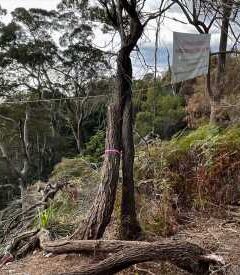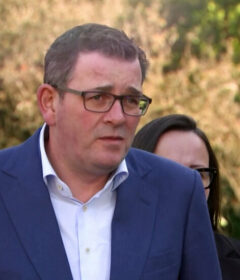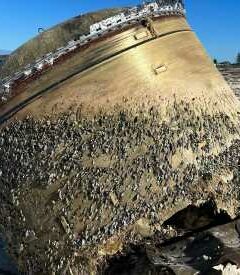Home » Australasia »
Examining Religion and Violence
The Australia Letter is a weekly newsletter from our Australia bureau. Sign up to get it by email. This week’s issue is written by Damien Cave, our bureau chief, and a former religion editor for The New York Times.
___
A few days after the Christchurch attacks, I found myself writing a story in a pub not far from where it happened, drawing questions from two bearded blokes sitting beside me at the bar.
Once I told them why I was there, they were quick to tell me they were outraged by the violence. They were also well versed (maybe too well versed) in 4chan and other sites that nurse white supremacy — and they were very worried about retaliation from Muslim extremists.
“Before, we were invisible,” one of them said. “Now we’re on their radar.”
Sunday’s bombings in Sri Lanka, where more than 350 people were killed at Catholic churches and hotels, with the Islamic State taking credit, may or may not have had anything to do with the shootings at two Christchurch mosques — Sri Lankan officials said it did; New Zealand officials were doubtful.
[Here’s what we know, and don’t know, about the Sri Lanka attacks.]
But as I read about the Catholic victims killed while they were praying, like the Muslim victims in Christchurch, I thought about religion’s role, and the fears and anger that one act of violence reproduces with almost nuclear force.
The fallout effect of terrorism is what terrorists bet on. Both the Christchurch killer and those responsible for the killings in Sri Lanka committed mass violence to draw attention to a narrative of hate and propel their belief in a global clash of civilizations.
They want everyone, of course, to see the world the way they do, but what’s increasingly clear from research into radicalization online is that extremists are most engaged with extremists — white supremacists use Islamist terrorism to validate their Islamophobia; the Islamic State uses violence against Muslims to recruit new fighters.
What are the rest of us to do?
Here’s a sad thought I had this week: We have to accept that threats anywhere are threats everywhere. In our networked world, where a video of Muslims being murdered in New Zealand can be shared on the other side of the world seconds later, the radioactivity of extreme ideology can no longer be fully avoided or forecast.
The trafficking of hate has simply become easier. It’s everywhere online, at everyone’s fingertips, prompting many of us to question the value of unfettered connectivity.
Even Kara Swisher, a lover of technology and a New York Times Opinion contributor, praised Sri Lanka this week for shutting down access to Facebook, YouTube and other social media outlets after Sunday’s attacks.
So perhaps that’s one solution in the wake of extremist violence; beware of what you consume online. Test the facts. Only trust credible sources.
More broadly, experts in conflict management would argue, we’d all be well served by avoiding the mental trap of overgeneralized fear.
The guys I met at the bar in Christchurch were not much for distinctions; they worried about being on “their radar” — referring to Muslims in general, not the small subset of the world’s 1.8 billion believers in Islam who weaponize the faith for their own interests.
Researchers who study religion in conflict point out that it’s a common mistake. In a comprehensive look at the intersection of faith and international affairs, produced by the British Academy in 2015 (I recommend it if you want to dive deep), a group of scholars warned against treating Islam, or any other religion, as a clear cause of bloodshed.
“There is no evidence to indicate that particular religious traditions are, by virtue of their theology, more prone to violence or more likely to lead to conflict or peace than others,” they wrote.
“We must be careful not to give undue prominence to religion in all instances,” they added. “It is not a major factor in every conflict and there is a risk that it can sometimes come to obscure more deeply rooted causes and motivations.”
More locally, for example, a study of trial evidence for Australia’s first convicted Islamist terrorist, Jack Roche, also concluded that “religion plays a far lesser role in radicalization toward violent extremism than the policy response contends and this has implications for counterterrorism programs that aim to address the drivers of violent extremism.”
In short, the evidence suggests, directing our fear or outrage at religion alone — even as religious violence increases — will not do us any good.
Do political leaders worldwide have enough of a nuanced understanding of religion to get that?
There are few signs that they do, which means the most productive response to all this violence may have to come from all of us.
What do you think could or should be done to tamp down extremism, whether tied to religion, racism or any other form of hatred? What experience, if any, have you had with these issues and the fear terrorist attacks produce, and how have you dealt with them?
Please share your thoughts with us at [email protected] or in our NYT Australia Facebook discussion group.
Now for our stories of the week.
___
Sri Lanka Mourns
This week, funerals began to be held for victims of the Easter Sunday bombings in Sri Lanka. Our reporters on the ground have been speaking to officials, residents and experts to investigate its aftermath.
The death toll has now risen to more than 350 and two Australians were among those that perished in the attack.
ISIS has also claimed responsibility for the attack, distributing an online video showing the person Sri Lankan officials suspect of having led the attacks. The bombings have signaled that the terrorist group does not need to control major territory to be a major threat. Two sons of a spice tycoon have been named as among the bombers.
You can learn more about the attacks, including historical context, in this episode of The Daily.
____
Australia and New Zealand
Stories this week from our part of the world:
• New Zealand is offering permanent residency to all of those who were at two mosques during last month’s Christchurch attacks, as well as to the immediate relatives of victims and survivors.
• New Zealand will also meet with French leaders to forge an agreement aimed at eradicating violent extremist content on the internet.
• From our Opinion desk: Do Australians have a case of Jacinda envy? How two similar cultures have produced two different attitudes to women in leadership.
• Feral felines are driving the country’s native species to extinction. Now a massive culling is underway to preserve what’s left of the wild. Read this deeply-reported feature from The New York Times Magazine.
• In April 1919, the architect Walter Gropius founded one of the most influential art and design schools ever: the Bauhaus. Here’s how that legacy has played out in Australia and the world.
• Why has Australia fallen out of love with immigration? It may not have as much to do with cities and infrastructure as you think.
____
Around the Times
A few of our most popular Times stories this week:
• Politics|Joe Biden Announces 2020 Run for President, After Months of Hesitation: Former Vice President Joseph R. Biden Jr. announced Thursday that he would seek the Democratic nomination to challenge President Trump.
• Technology|Facebook Expects to Be Fined Up to $5 Billion by F.T.C. Over Privacy Issues: The penalty would be a sign that the United States is willing to punish big tech companies.
• Smarter Living|Why ‘Find Your Passion’ Is Such Terrible Advice: Prepare for a hard truth: We’re pretty bad at most things when we first try them.
• Movies|Everything You Need to Know About ‘Avengers: Endgame’ in Two Minutes: An interactive guide to tying up the last 21 installments of the Marvel Cinematic Universe.
____
… And over to you
Our last newsletter focused on Notre-Dame, sacred trees and how we grieve historic losses. Thanks to everyone who wrote in. Here’s a selection of your thoughts. If you’d like to contribute this week, you can write us at [email protected].
“I was saddened by the fire in Paris that demolished a beautiful old church. The truth is, I shed tears to see children in other communities eating rotten food from a rubbish dump. We have millionaires who have found so much spare money to restore the Paris landmark but none to help the children eating themselves to sickness and death because they are poor and displaced.
Strange world when objects are revered more than a child’s life.”
— Sandie Kelsey-White
“I believe it’s fairly straightforward in that it comes down to how many people connected with said ‘thing.’
It’s like humans and death. A famous person (politician, activist, highly charismatic person) is going to get a lot more people at their funeral than a recluse. It doesn’t diminish the loss, it’s just felt by less people.
Notre-Dame is in innumerable books, poems, films, momentous historical events, plus so many people have been there and marveled at its epic execution and place in history.
The Aboriginal birthing tree is pretty amazing too, but has been experienced by a handful of people. Less important? Who knows. Just different.”
— Scotty McCartney
“Your title story above, at first, seemed rather “politically correct;” in other words, does everything have to be equal?
Once I got past the title (meaning, I actually read the story), I found myself not only agreeing with your premise, but angered by the concept of losing this very significant monument of nature. Being a fan of movies, it sounds like the powers-that-be should be made to watch ‘Avatar;’ of course, revising the highway plan would likely cause ‘real world’ inconvenience and money.
It does seem that, by and large, modern homo sapiens believe that only man-made items are worthy of preservation and conservation.”
— Steve D.
Damien Cave is the Australia bureau chief for The New York Times. He’s covered more than a dozen countries for The Times, including Mexico, Cuba, Iraq and Lebanon. Follow him on Twitter: @damiencave.
Source: Read Full Article



